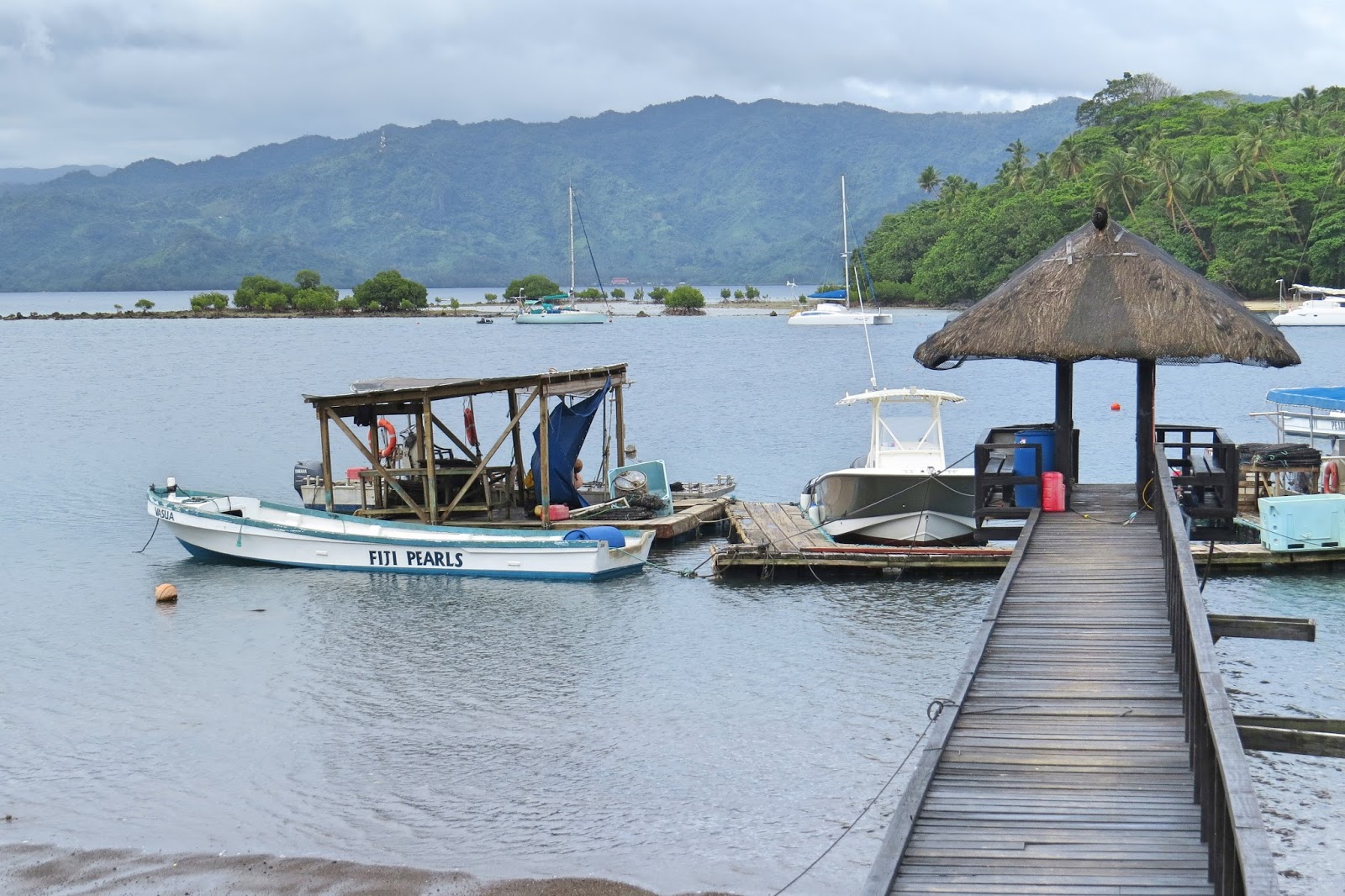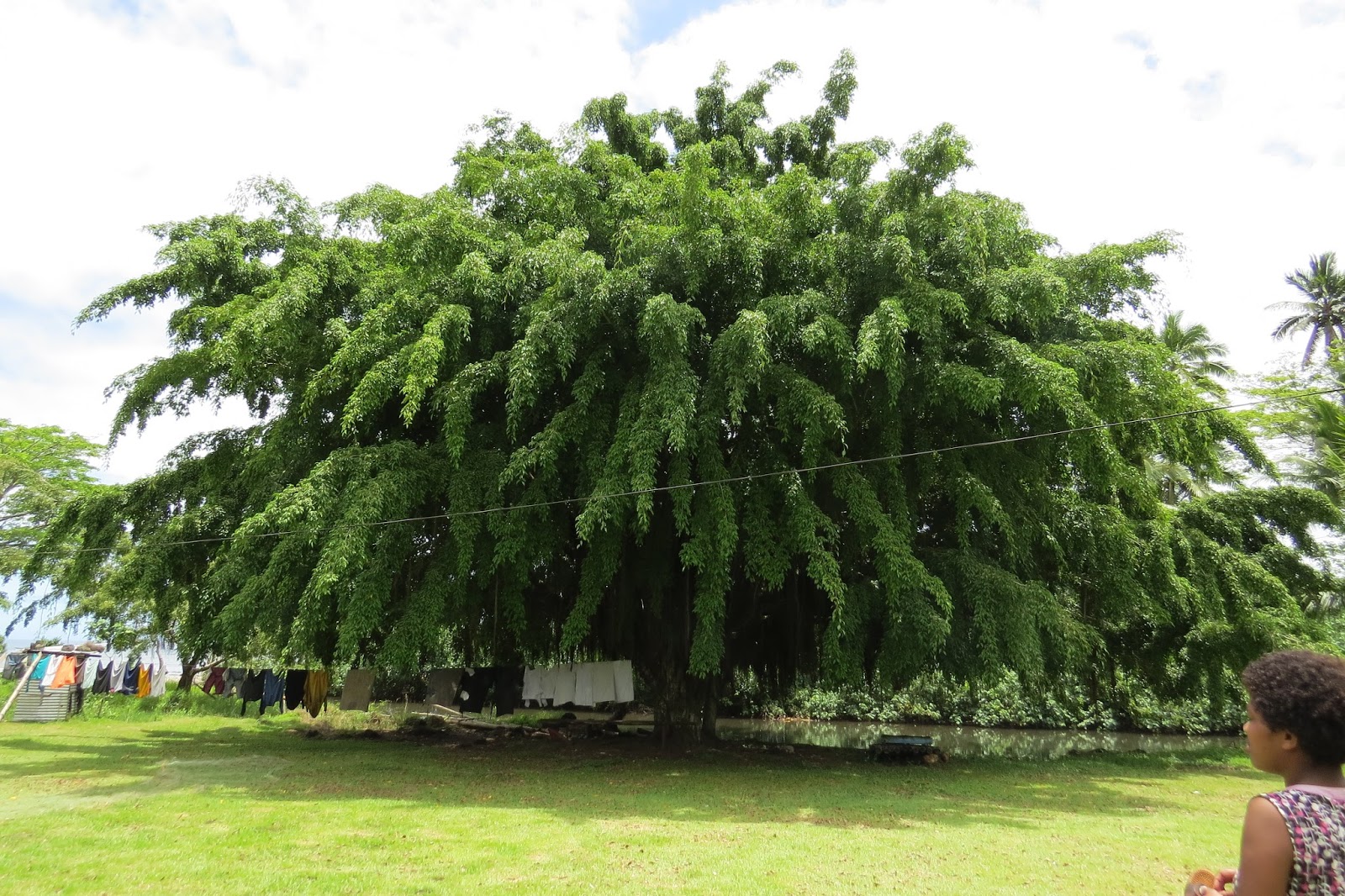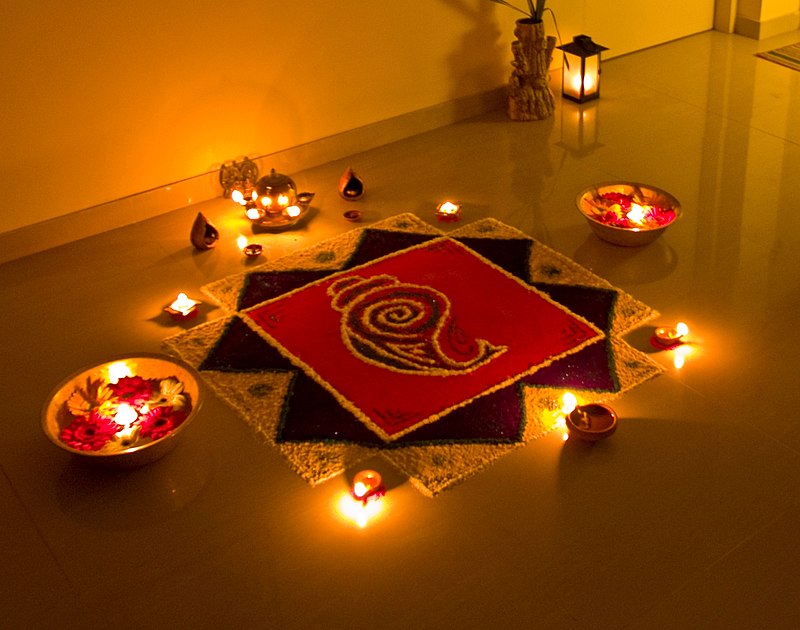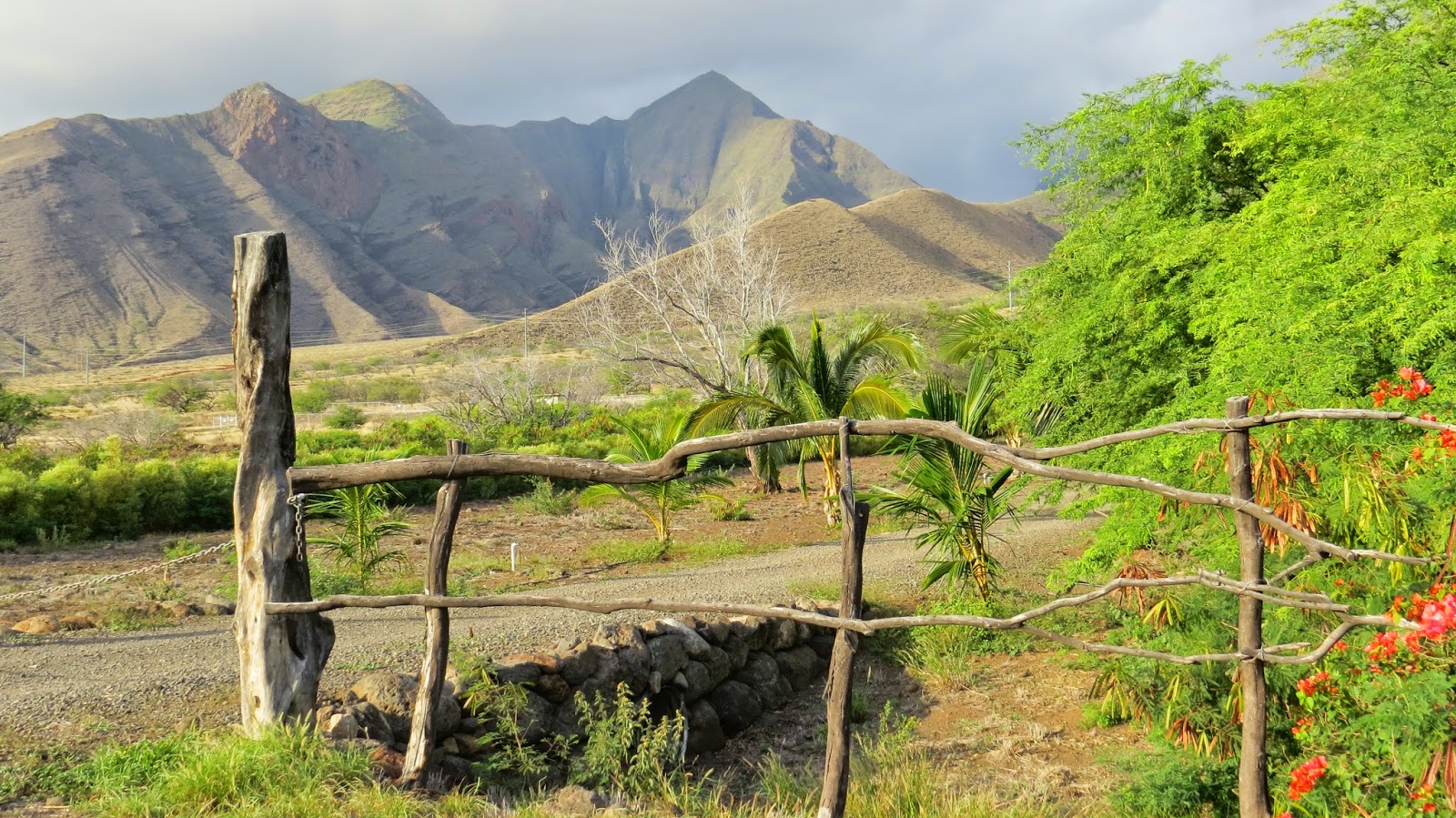 |
| A few other boats dock at this pier. |
Good news! Yesterday, in the pelting rain, wearing jackets with hoodies, we returned to the dentist at the hospital in the village. By the time we reached the driveway where Rasnesh was parked, we were soaked, drying off in no time in the hot weather.
Arriving at the dentist’s office in a matter of seconds, not minutes, we were whisked away to a treatment room. Immediately, the same Indo-Fijian dentist entered the room with a wide bright white toothy smile seeming to remember us from one week ago when we had the last five minute appointment.
He looked in Tom’s mouth happily stating it appeared the infection was gone and the mushy gums were healing. The three teeth were no longer as loose in the previously infected spongy gums and would continue to tighten over time.
 |
| This boat navigates to the pearl beds. |
The dentist suggested Tom use Listerine mouthwash to kill bacteria. For awhile, he’d stopped using the coconut oil, teeth pulling ritual but is back at it again since the infection had begun a few weeks ago. Organic, unrefined, food-grade coconut oil is a known antibacterial with no added chemicals.
Once we get situated in New Zealand, he may decide to make an appointment for a periodontist for further treatment which most likely would have prevented the infection in the first place. Traveling the world has a tendency to cause us to be less mindful of “preventive” care beyond that which we’re able to accomplish on our own.
Thanks to all of our wonderful readers who sent email, posted comments and sent prayers and good wishes his way.
Living in a third world country can easily incite a little nervousness when it comes to medical care of any type. We’ll take this into consideration more as we age planning the distant future itinerary.
 |
| This long pier leads the Fiji Pearls boat where tourists can visit the pearl beds after which tourists typically purchase pearl jewelry. |
Continuing on in part two of yesterday’s discussion of the criteria we’d established for our travels in March 2012, on March 26, 2012, we posted a second portion and a summarization of all of the criteria as shown below, again in italics with comments at the end on areas in which we’ve changed:
The remaining criteria:
Criteria #7: Never stay in a vacation rental for less than one month. The rationale behind this rule is simple. Staying in one location not only reduces transportation expense but provides us with the opportunity to negotiate better rates when staying a month or more.
Many of the property owners allow a stay of as little as three or four days requiring added paperwork, liability and cleaning. Their piece of mind is a substantial motivator for them to accept a lower rent for their property. As each month’s stay is extended in the negotiations, the price goes down proportionately. This will be illustrated by the rental amounts we will post with the itinerary.
Criteria #8: No trinkets! As tempting as “bargains,” “souvenirs” and local “handicrafts” appeal to us during our travels, we will resist the temptation. The cost of excess baggage along with the horror of hauling some heavy wooden object all over the world is preposterous!
We will make a list of the items we encounter that tempt us. Once we settle someday, we will easily be able to find similar items online or in some cases, purchase them from the actual vendor’s website. Often these tempting artifacts can be found for half the price on eBay, from sellers who found themselves tempted during their travels. Most often, when we look back at such a wish list at a later date, we’ll find that we have lost interest anyway.
Criteria #9: The availability of Internet/cell phone access with us at all times. This was a tough one. I spent no less than an entire week researching various options. We now have discovered solutions (of course, subject to technology changes over the next several months). For Internet access, 24/7, in our rental, on the road, and part-time on cruises, we’ll use MiFi Rental with XCom Global. In a future post, I will write about the cost and how this works.
As for cell phone service, we will be buying an Unlocked International cell phone into which we can purchase and install a local SIM card using the available local network (which is what most cell phone users in many countries use for service). SIM cards result in considerably lower rates, all without the use of a contract. Here again, I will write an entire post on this subject.
Criteria #10: Cook and eat in! Due to health concerns we live a low carb, wheat-free, starch-free, grain-free, sugar-free, and gluten-free lifestyle. Occasionally Tom will indulge along the way! He won’t be able to resist pasta in Italy or a baguette in France. But, for me, my ongoing health from this way of eating it a huge motivator. Cooking and eating in the kitchen of our vacation rental will save us $1000’s along the way.
Criteria #1: Do not have a permanent home!
Criteria #2: Do not own cars!
Criteria #3: Do not stay in hotels unless absolutely necessary!
Criteria #4: Do not pay more than that which we were willing to pay for rent in our chosen retirement community!
Criteria #5: Use the cruise!
Criteria #6: Bag the excess baggage!
Criteria #7: Never stay in a vacation rental less than one month!
Criteria #8: No trinkets!
Criteria #9: The availability of Internet/cell phone access with us at all times!
Criteria#10: Cook and eat in!
 |
| The heavy rains and cloud-covered sky preventing us from sightseeing. |
As we peruse the above list, there was one item we failed to note which applied to us: Don’t have a storage facility with “stuff” from our old lives. The only storage we have are tax records and a few bins of memorabilia at son Richard’s home in Henderson, Nevada and another few bins at Tom’s sister’s home in Minnesota. We have no storage anywhere else. What would be the point of saving furnishings, old clothes, and household and kitchenware?
Considering Criteria #7, we’ve faltered a few times, once staying in a vacation home in Waikiki for 11 nights and another in Vancouver for six nights. We didn’t care for the Waikiki property and later wished we’d stayed in a hotel. But, the Vancouver property was fantastic with no regrets there. If we ever take a cruise out of Vancouver in the future, we’d happily stay at that property.
Otherwise, every item on the original criteria list at this link written over four years ago, still stands today. Of course, between the lines, we’ve learned a lot and in our then inexperience, we’ve discovered so much along the way.
 |
| Steam escapes from underground hot springs in this area near the village. |
When we think in terms of traveling for ten years or more, good health providing, we have no doubt some of these criteria may change one way or another.
Flexibility and a willingness to change is a vital aspect of successful long term travel. Every day, we strive to maintain open minds and hearts, knowing this adventure requires the ability to adapt, grow and learn along the way.
The perception for most senior citizens is that we’re “set in our ways” but, this may not be true for all of us. For even our treasured armchair readers, they too may change in their attitudes and beliefs about traveling the world as they share this journey along with us.
Have a glorious day! It’s raining in buckets here and we’re as content as we could possibly be.
Photo from one year ago today, November 17, 2014:
 |
| We were in awe of this exquisite and unusual Monkey Pod Tree in Maui. For more vegetation photos in Maui, please click here. |













































































